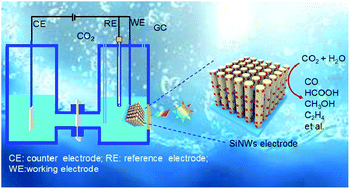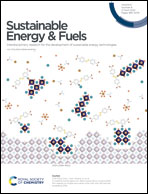Fabrication of p-type silicon nanowire array based photoelectrodes for the efficient photoelectrocatalytic reduction of CO2 to fuels and chemicals
Abstract
With the decrease of fossil resources and the large amount of CO2 emissions, research on the preparation of fuels and chemicals using CO2 has attracted wide attention. The efficient activation of CO2, as an extremely stable small molecule, is one of the most challenging scientific problems in chemistry. The photoelectrocatalytic reduction of CO2 is based on solar energy and water as energy and electron sources, respectively. It is an effective means to prepare renewable fuels, namely, artificial photosynthesis, which is one of the ideal ways to realize the resource utilization of CO2. The p-type silicon nanowire arrays (SiNWs) have a potential application value for photocathode materials due to their excellent performance, such as the photoelectric effect, high surface activity, high electron transport characteristics, high stability and so on. This review focuses on the design and fabrication of SiNW based photoelectrodes and their recent progress for the efficient photoelectrocatalytic reduction of CO2 to fuels and chemicals. The typical reaction modes (photocathode mode, photoanode mode and double light electrode mode) for the photoelectrocatalytic reduction of CO2 are presented and analyzed. Furthermore, the preparation methods of SiNWs, such as the laser ablation, chemical vapor deposition (CVD) and metal-assisted chemical etching method, are also discussed, especially, the metal-assisted chemical etching method. The photoelectrocatalytic activity of pure SiNWs, anchoring metal nanoparticle cocatalysts (monometal and double metal structures), anchoring metal complex cocatalysts, anchoring non-metal nanoparticle cocatalysts and combining a photoanode with photocathode, are summarized and analyzed. Future prospects will be addressed in the last part. This review aims to provide deep insights into the rational design of efficient photoelectrodes for the photoelectrocatalytic reduction of CO2 to fuels and chemicals, achieving the carbon peak and carbon neutral goals as soon as possible.

- This article is part of the themed collection: Sustainable Energy and Fuels Recent Review Articles


 Please wait while we load your content...
Please wait while we load your content...